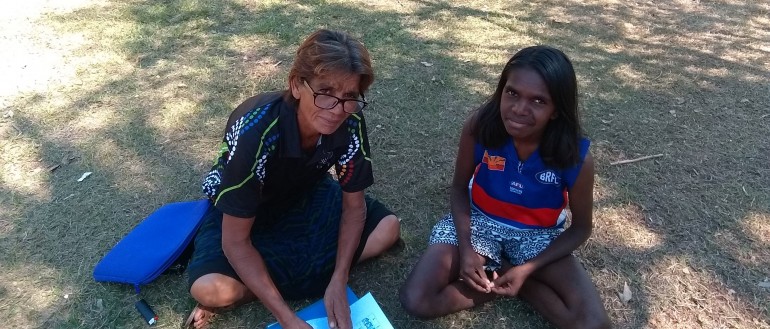Did you know that Aboriginal and Torres Strait Islander people live with rheumatic heart disease (RHD) at rates 60 times higher than non-Indigenous Australians?
RHD is permanent heart damage, resulting from a throat or skin infection caused by Group A Streptococcus (Strep A). If not managed properly, it can cause heart failure, death and disability.
Strep A is a germ that infects only humans and is spread from person to person through the respiratory route (e.g. coughing) from someone with a strep throat infection, or through skin contact from someone with Strep A skin sores.
For many people living with RHD, they are required to have penicillin injections once every 28 days for at least five years to reduce their chance of getting it again and causing or aggravating heart valve damage.
A team at Menzies School of Health Research (Menzies) is working with communities, Telethon Kids Institute and other research partners to eliminate RHD for Aboriginal and Torres Strait Islander people. Project lead, Professor Anna Ralph, says that the End RHD Communities study is about empowering community members to know how to reduce their chance of getting RHD, and have the strategies available to achieve that.
“Eliminating RHD requires a multi-pronged approach ranging from better housing (to reduce crowding that drives spread of disease) through to managing penicillin treatments and better education for doctors, Aboriginal Health Practitioners and nurses to recognise who has the precursor conditions that lead to rheumatic heart disease,” Professor Ralph said.
To do this, Aboriginal community workers are employed in the participating communities to be knowledge brokers. Once they have a good understanding of RHD, they can explain the story to other community members in a way that makes sense.
“Aboriginal community workers help teach people about RHD, as well as provide the support that a person needs to have to live RHD-free lives. They support people to get to the clinic when needs be, escalate housing repair issues further if there are delays in getting things fixed, and advocate for better housing conditions to reduce the spread of infections,” Professor Ralph said.
This model has been accepted by communities and clinics to provide personal, relevant support to people living with RHD and their families. It has also identified that the community workers need additional support from project staff, more group training and the opportunity to work in a supported team rather than individually.
“We’re supporting these changes during the next steps in the project. We’ve also learnt that there can be reluctance to disclose the presence of skin sores so more community education to reduce stigma is needed,” Professor Ralph said.
Having people in the community that help educate people about RHD has also led to positive outcomes due to sharing of knowledge. For Professor Ralph, these are the stories that inspire her work.
“Since starting the project, we have heard stories where a parent has recognised that their child had symptoms of rheumatic fever even though the clinic staff missed it (the child ended up getting the right treatment after the parent spoke up). Also, a young boy who wasn’t good at getting his penicillin injections on time was motivated to get straight to the clinic after the community worker showed him pictures of what damaged heart valves look like.
“It’s inspiring to see how knowledge can be empowering. But sustainable behaviour-change needs more than just knowledge, this project supports that to a certain extent, but the underpinning issues of crowded housing, poverty and limited employment and educational opportunities - the fundamental drivers of rheumatic heart disease - still need bigger-picture approaches.
“There is a lot of momentum around RHD elimination, and this project is one part of that overall jigsaw puzzle.”
The END RHD Communities project has been made possible with the generous support of the Heart Foundation (January to December 2018) and Bupa Foundation (September 2018 to August 2021). Evaluation has been supported through National Health and Medical Research Council grants.

